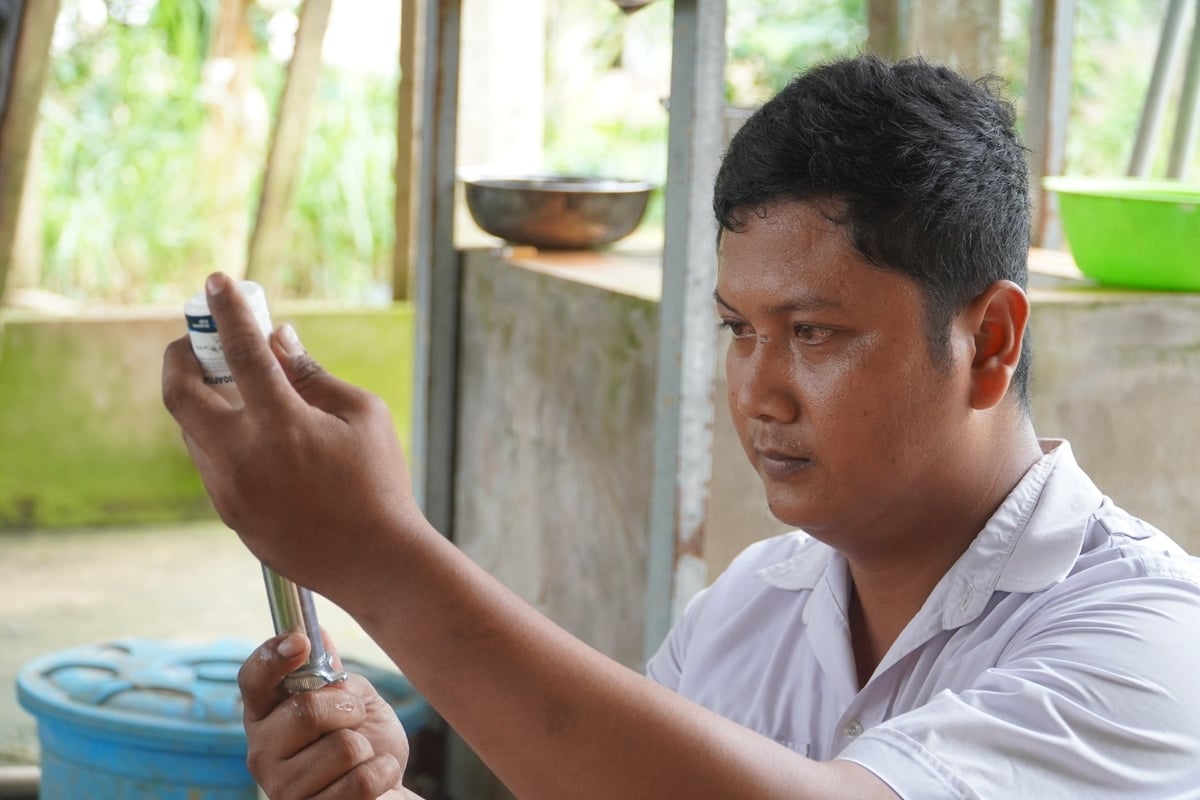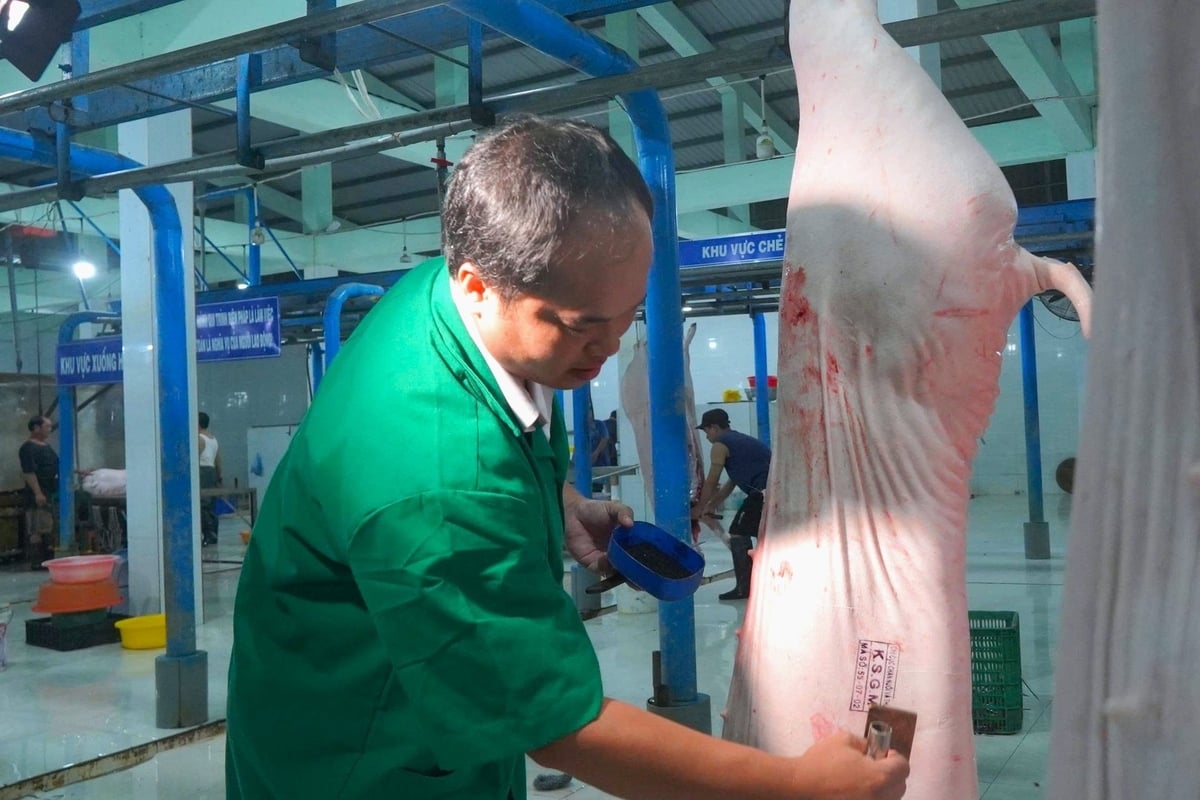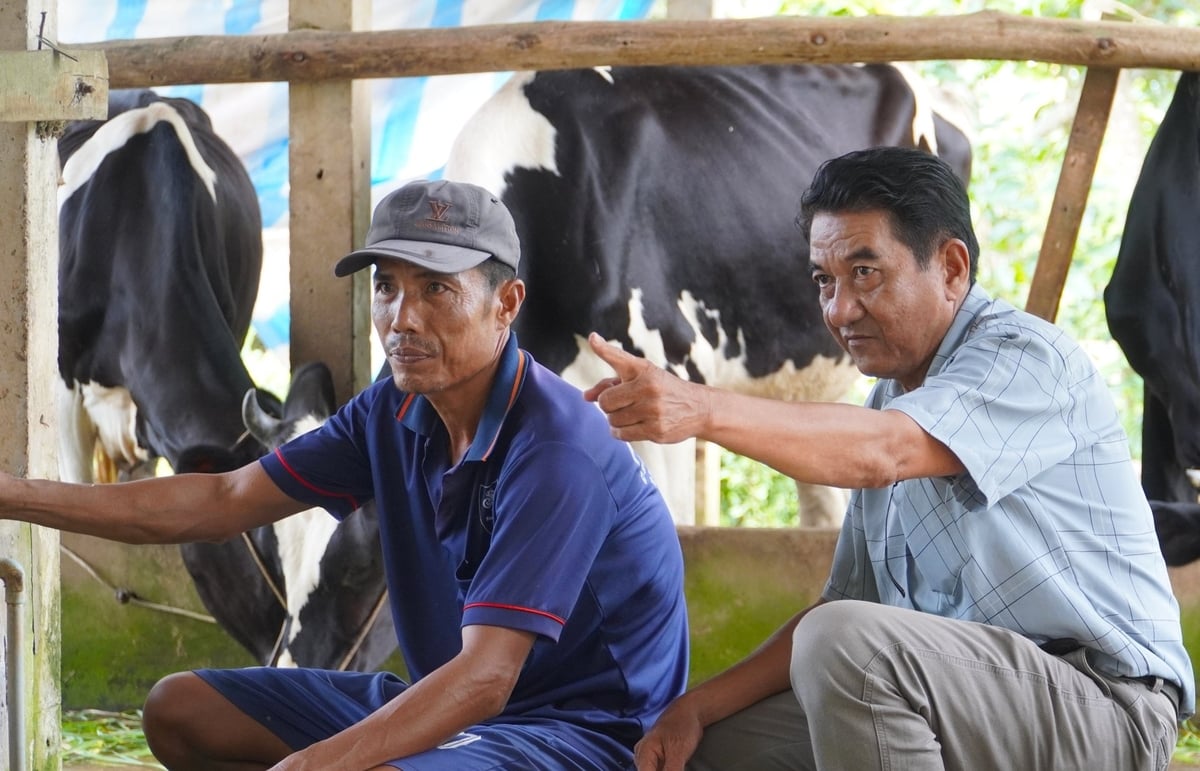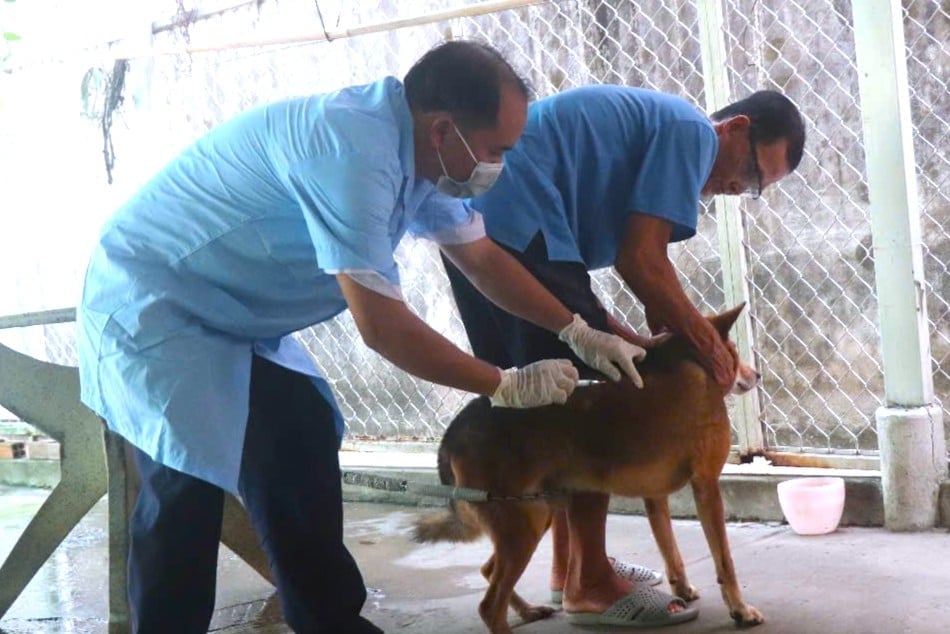December 23, 2025 | 12:53 GMT +7
December 23, 2025 | 12:53 GMT +7
Hotline: 0913.378.918
December 23, 2025 | 12:53 GMT +7
Hotline: 0913.378.918
For many years, the livestock and veterinary system in Can Tho city, as well as the Mekong Delta provinces, has operated effectively following the vertical model. At the provincial level, the Sub-Department of Livestock Production and Animal Health plays the role of a coordinator, and specialized stations cover the district levels. As for the commune level, there are permanent livestock and veterinary staff or collaborators, closely monitoring the area.

Maintaining the grassroots veterinary system helps prevent and control epidemics promptly and smoothly. Photo: Kim Anh.
Since 2006, many communes have implemented the Technical Economic Team model, consisting of three members, including agricultural extension officers, plant protection officers, and veterinary (or aquatic) officers. This organizational model assists many vaccination, disease control, and barn sanitation programs, which results in synchronous implementation. Farmers can easily access information and new livestock techniques. The livestock and veterinary sector of Can Tho city has thus consistently gained the trust of the people.
Many local livestock farmers agree that the grassroots veterinary force plays an important role. The officers are almost always present in the locality, close to the people. When an incident occurs during the farming process, this force is present in time to provide support and guidance on how to handle the situation or report to superiors for appropriate solutions.
With a high rate of small-scale livestock farming in the Mekong Delta region, the grassroots veterinary force is akin to an "extended arm" helping the professional sector implement policies and promptly respond to the complicated developments of diseases in livestock and poultry.

In addition to disease prevention, the grassroots veterinary force also directly participates in slaughter control and animal product quarantine. Photo: Van Vu.
Statistics from the Department of Agriculture and Environment of Can Tho City show that the city has recorded one outbreak of rabies in dogs and three outbreaks of African swine fever since the beginning of the year. A total of 52 pigs were destroyed, resulting in nearly 2 tons of meat lost. The grassroots veterinary force is the frontline in early detection, zoning, and timely handling of outbreaks, limiting damage and preventing the spread of the disease.
After the old provinces of Soc Trang, Hau Giang, and Can Tho City merged and implemented the two-level government model, specialized stations in livestock production and animal health, previously located at the district level, were forced to be rearranged. Thus, there is an urgent need to organize the grassroots veterinary system so as not to interrupt the function of disease monitoring and prevention.
On May 28, 2025, the leaders of the Department of Agriculture and Environment of the three localities held a meeting and agreed to submit to the Department of Home Affairs a plan to reorganize the apparatus of the Department of Agriculture and Environment of Can Tho City (new) after the merger. Accordingly, Can Tho City Sub-Department of Livestock Production and Animal Health will be reorganized based on merging the existing departments in the three provinces and cities, while the Livestock Production and Animal Health Stations are expected to remain the same.

Veterinary staff are regularly present to provide farmers with technical support and guidance. Photo: Kim Anh.
According to Nguyen Tan Nhon, Deputy Director of the Department of Agriculture and Environment of Can Tho city, the draft plan to rearrange the Livestock Production and Animal Health Stations is being consulted before being submitted to Can Tho City People's Committee for approval.
The proposed arrangement is to reorganize old Livestock Production and Animal Health Stations into 25 regional stations, each station managing several communes, ensuring coverage in 103 communes and wards. The three Animal Quarantine Stations at traffic hubs will be maintained, with staff on duty regularly to control animal products imported and exported from the province.
Regarding the veterinary staff at the commune level, the department's current plan is to maintain the status quo, although the staff mainly operate under contract. The city’s agriculture and environment sector will continue to evaluate the situation and submit to superiors a suitable plan to maintain stability.

Grassroots veterinary forces are considered the frontline of the disease management system. Photo: Van Vu.
Vice Chairman Nguyen Van Dac is in charge of the economy of Cu Lao Dung commune (Can Tho city). He shares his view about the process of restructuring the vertical agricultural system. “After the reorganization, regional Livestock Production and Animal Health Stations will be established. For some other fields, such as crop production and plant protection, and aquaculture, if we establish Agricultural Service Centers integrating specialized stations in the future, we need to carefully calculate the operating mechanism to avoid problems.”
Translated by Samuel Pham

(VAN) Private sector will be a powerful force for investment and innovation to share solutions for nature conservation and biodiversity restoration.
/2025/12/18/4844-4-223614_595.jpg)
(VAN) Building on the 'Large-Scale Rice Field' project, An Giang is developing high-quality rice raw material zones, strengthening consumption linkages, and standardizing processes to meet market requirements.

(VAN) With support from KOICA, livestock sector is developing the regulatory framework for management based on South Korea’s experience.
/2025/12/17/0042-2-075234_14.jpg)
(VAN) In Vinh Long, high-quality, low-emission rice models are being scaled up from cooperatives, helping reduce production costs, increase farmers' incomes, and protect the environment.

Professor Nguyen Duc Ngu, the third generation of leaders since the establishment of Vietnam’s Hydrometeorology sector has witnessed and lived through the long arc of its development.

(VAN) Climate change, saline intrusion, and unsustainable farming practices are depleting agricultural land in the Mekong Delta. Restoring soil health is a key solution for the future of agriculture.

(VAN) Agroforestry coffee not only enhances coffee quality but also helps farmers in Quang Tri enter carbon credit market with high expectations.